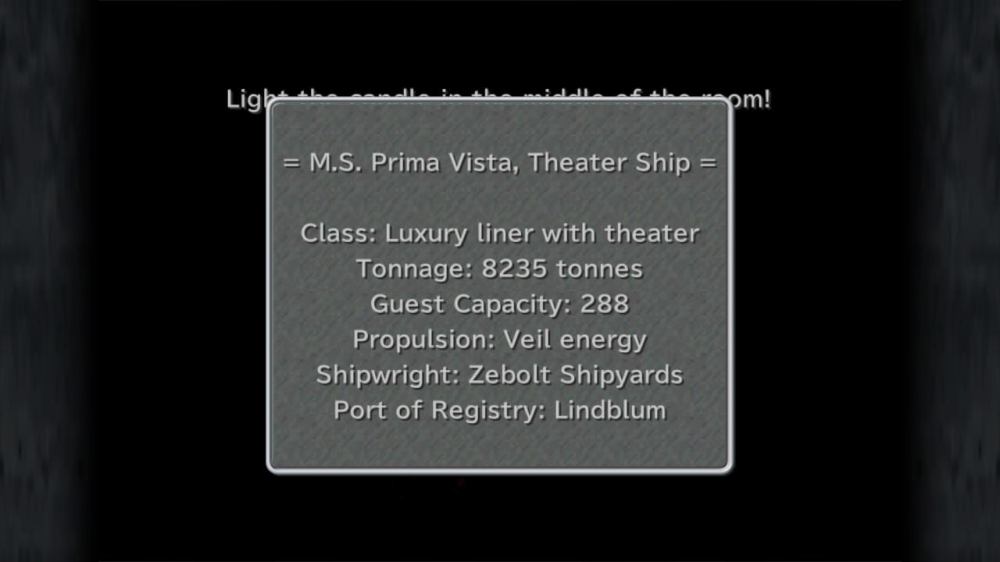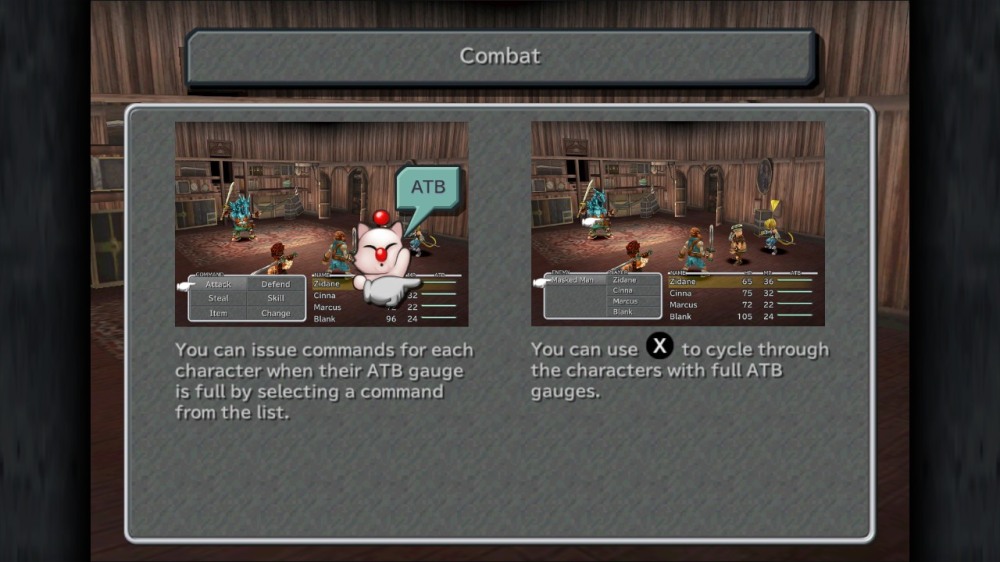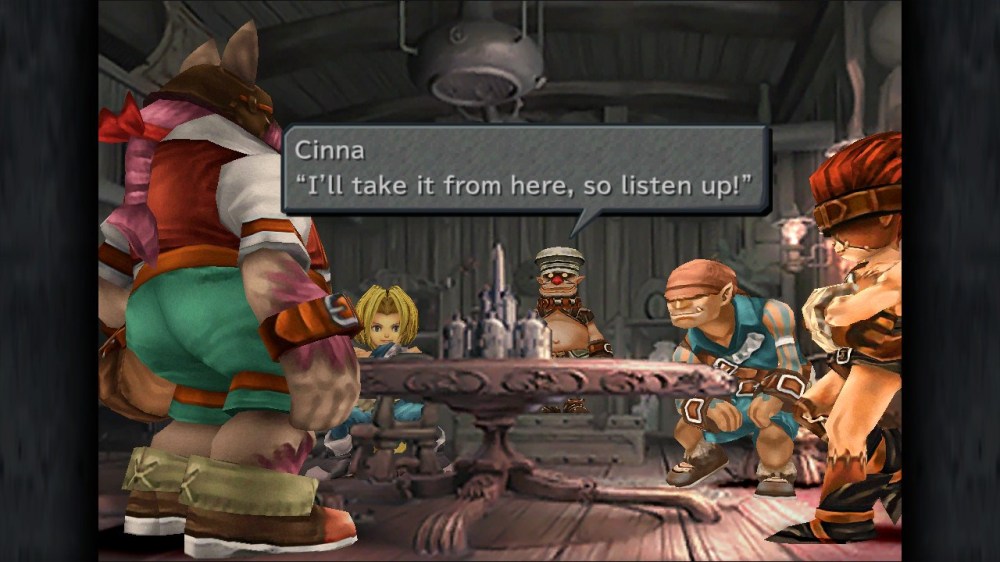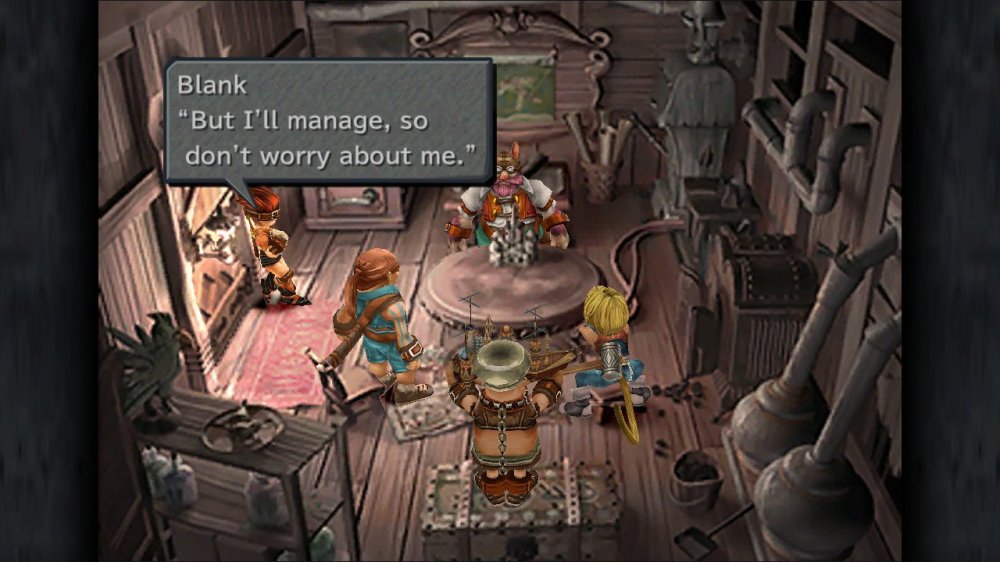Links-Home–Reviews–Articles–Videos–Library–Contact
Welcome to my first episode of season 2 of game story case studies. Today, I will feature the first part of a very in-depth look at a classic RPG, Final Fantasy IX. Since this is a reasonably long game with a lot of dialogue, I will be covering only the content most relevant to the main story. As such, most optional dialogue from NPCs will not be covered in this critique. Since this game is also more visual in its storytelling than in the previous game, some cutscenes that lack dialogue will be covered, as that sort of visual direction could be considered a form of writing.
Additionally, due to the length of the game, I will be mostly covering the story beats between each major save point in each article. I will also cut some articles into multiple pages, depending on how much footage I get in each scene, so that it may be easier to read. Finally, I will also cover some written information that corresponds to the game design of the game, in order to highlight some issues that writing for video games have.
A fun thing about Final Fantasy IX is that there are a lot of nods to previous games in the Final Fantasy series within. I will point out each one as I find them to the best of my knowledge. If you notice some that I missed, let me know in the comments, with a brief explanation.
Of course, since I am covering the entire game, there will be major spoilers here, so if you aren’t ready to find out how this game’s story plays out, then come back to this article after playing Final Fantasy IX. Now let’s get started!
Opening:


We start with a scene featuring a boat in the middle of a storm, with a woman on board. Its relevance is unclear at the moment, but can be enough to catch the viewer’s attention. Also, a portion of the game credits are shown throughout this scene, similar to a movie. I believe the company that made this game (Square Enix, known as Squaresoft at the time) wanted to elevate the Final Fantasy game’s appeal to match the quality of movies. This ambition shows in imitating the format of a movie here.


At this point, this young woman wakes up from the dream that the visual direction implies she was having. Additionally, she is looking at something out of her window, which I will go on to show right now.


She was looking at this airship, a mode of transportation found throughout the Final Fantasy series. The camera cuts to an occupant onboard, a young man with a monkey-like tail. The game moves on to the player controlling this character.


So, the game gives you control over this character. Then something interesting happens here:


The game lists the full controls, but there is a lot to take in here. It usually is better to teach the player piece by piece how to play each part in the early portions of the game, but this can work here too, even if it is a bit sloppy. Also, the game is not too subtly telling the player what to do if you take too long.
 I found this bit of information while wandering in the dark. This is a very thorough description of the airship, and is an optional bit of info. This sort of thing isn’t needed in most types of games, but does add flavor to the setting and world of any work of fiction. Considering that this game has flying ships in a medieval fantasy world, it makes some sense to show that there are some regulations for how this world works.
I found this bit of information while wandering in the dark. This is a very thorough description of the airship, and is an optional bit of info. This sort of thing isn’t needed in most types of games, but does add flavor to the setting and world of any work of fiction. Considering that this game has flying ships in a medieval fantasy world, it makes some sense to show that there are some regulations for how this world works.
 The player is giving this option to light the candle. There isn’t any point in not lighting it, other than to pick up a few goodies that you can miss if you light the candle too early. Menus like this are crucial in RPGs like Final Fantasy, so it is good to see that it is clear and concise.
The player is giving this option to light the candle. There isn’t any point in not lighting it, other than to pick up a few goodies that you can miss if you light the candle too early. Menus like this are crucial in RPGs like Final Fantasy, so it is good to see that it is clear and concise.

And now we have the first character naming menu here. I will go with the default name of Zidane here, for convenience. This occurs right before he says his name for the first time.




Here’s some simple but effective dialogue. We learn these characters’ names, and from the context clues, that a meeting is about to start.



Suddenly, this character (or possibly monster) appears, as does an explanation of how combat works. The game’s first battle occurs here. Something I think the explanation doesn’t do well is describe the goal of a battle. The player has to defeat the enemy by damaging it with attacks, while avoiding taking enough damage to be knocked out in the process. Thankfully, this battle isn’t too hard as long as the player remembers to attack the enemy enough.



When the player wins the fight, this character’s costume falls apart and says these things. It appears this wasn’t a real fight, and that they were sparring, or practice fighting this guy.




This must be the boss, he sure has an interesting personality. Now let’s see what this crew is planning.



Well now, that is an interesting twist! It seems that the player is controlling a band of thieves intending to kidnap a princess! Many stories have the protagonist (or protagonists) save a princess, not steal one away. This twist might catch enough players off guard enough to want to figure out why the main characters want to perform this criminal act. Sometimes leading with a few good mysteries is a good way to keep players (or readers, or viewers, depending on the medium) playing. This might be a turnoff for those hoping to play as the good guys though, but there is much more to this story for those players too, but they will have to stick it out in order to get answers.




Interesting, they are using a play as a distraction as they kidnap Princess Garnet. Let’s see what else they have in store.


As expected, the player will be in direct control of the kidnapping. This might not sit well with those who want to be a hero when playing this game, but answers will come in time.






So the distraction will be these fictional “oglop” creatures. While they have yet to be shown on screen, it is implied that they are small bugs. The story also adds some personality to the character Blank, who doesn’t like oglops.
The player is then prompted what to say next. If the player chooses “That’s when I kidnap Queen Brahne, right?” you will get a reaction from the crew and then be given that prompt again until you choose the correct prompt, “That’s when I kidnap Princess Garnet, right?” The reaction to the correct prompt is the only one shown here, for brevity.
Go to page 2 to see the next scene:
Nice write-up! How Final Fantasy developed the cinematic, film-style side of itself is intriguing; have you read Power-Up by Chris Kohler? It does a lot of commentary on this subject, with Final Fantasy games as an example.
LikeLiked by 1 person
Thanks for the compliment! I plan on writing about most of the game eventually, so stay tuned. To answer your question, no I have not read that book. I will see if I can find it, as it may help me out with my analysis, and I’m always looking for something new to read.
LikeLiked by 1 person
finding the book should not be too tough, is quite well known and available. If you get it, I hope you enjoy and it helps you out!
LikeLiked by 1 person
Yeah I just found it online, and put it on my wishlist. Hopefully I read it soon enough once I finish my current read. I think I will set a reminder to get it to make sure it doesn’t slip through any gaps in memory.
LikeLiked by 1 person